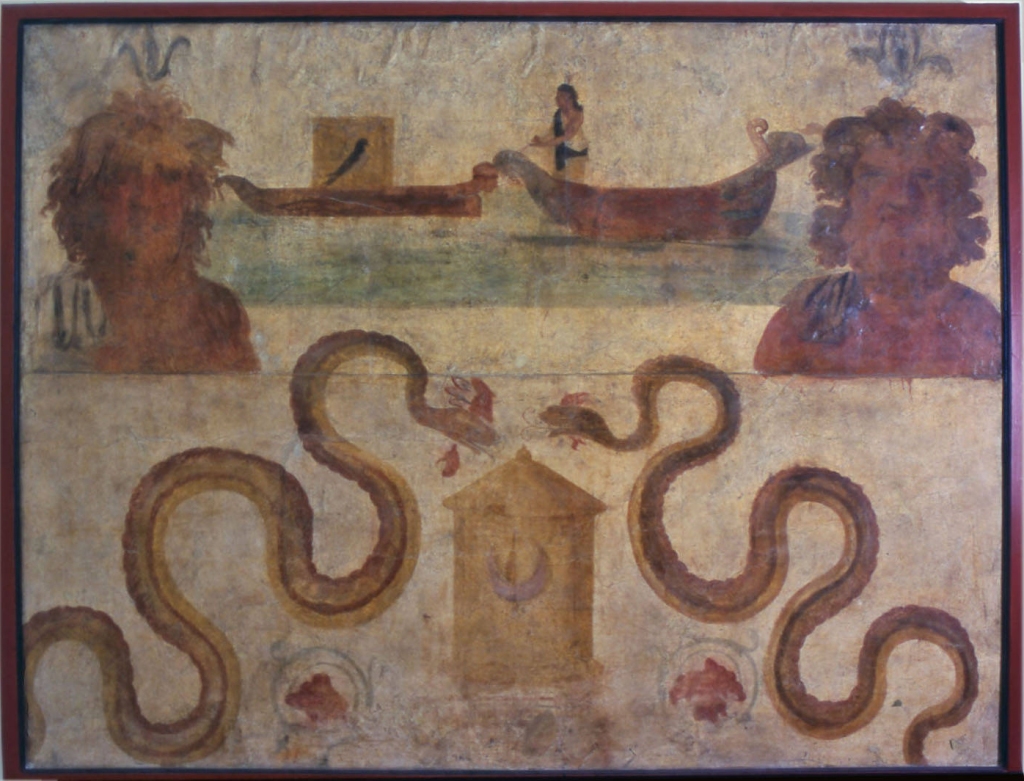
As one of the most important Goddesses of the ancient seaport of Alexandria, Isis was closely associated with the sea. In that Greco-Egyptian city, She was known by the Greek epithet Pelagia, “of the sea.”
Across the Mediterranean from Alexandria, Roman Isiacs celebrated the festival of the launching of the ship of Isis, the Navigium Isidis, which marked the opening of the shipping season on the sea. It’s the festival described by Apuleius in his ostensibly fictional account of initiation into Isis’ Mysteries in The Golden Ass.

There is another epithet of Isis that connects Her with the sea, shipping, sailing, and the wind necessary for it. It is Pharia.
As Pharia, Isis is connected with the great lighthouse of Alexandria, one of the Seven Wonders of the Ancient World and a famous symbol of the city of Alexandria. The lighthouse was called the Pharos after the small island on which it stood. Due to the lighthouse’s fame, pharos eventually became a general term for “lighthouse.” (This persists even in modern languages; in Italian and Spanish, lighthouse is faro and in French, it is phare.)
Isis Pharia is Isis the Lighthouse Goddess. Alexandrian coins frequently represented the Goddess and the Pharos together.
Roman inscriptions attest to the existence of an Isis temple or shrine on the island, very close to the lighthouse itself. Between 1994 and 1998, archeological divers in the bay of Alexandria discovered a huge, red-granite torso of a woman, the base of an Isis statue, pieces of the Pharos itself, as well as the remains of a rock-cut temple that may very well be part of the temple of Isis Pharia.

There are several legends about how the Pharos island got its name. One says that when Menelaus was returning from the Trojan War, his ship was blown off course and landed on the island. Not knowing where he was, he asked the first Egyptian he saw. The man responded, “Per Aoh,” meaning that the island belonged to the pharaoh. (Pharaoh is the Greek corruption of an Egyptian term for king, Per Aoh, which means “Great House.”) Menelaus heard it as “pharos.”
Another story derives the name from that of Menelaus’ helmsman, Phrontis, who died on the island. In Greek, the word pharos refers to a cloth or sail. In accordance with this punning meaning, images of Isis Pharia show Her with a billowing sail in one hand while Her cloak is blown backwards over Her shoulder and the famous lighthouse stands in the background.

In late legend, Isis was said to have invented the sail while searching for Her son, Horus. The early Christian writer Tertullian, writing against the Pagan religions, says that Pharia’s name “shows her to have been the king’s daughter,” (as opposed to being a true Goddess, of course). Tertullian is surely interpreting Pharia as a feminized version of pharaoh.
Just as the illumination of the Pharos lighthouse turned Alexandria’s dangerous seas and tricky harbors into commerce-friendly ports, the spiritual light of the Lighthouse Goddess serves as a guide for humankind. Isis Pharia is the guardian of navigation and safe harbors—of ships and of souls.




